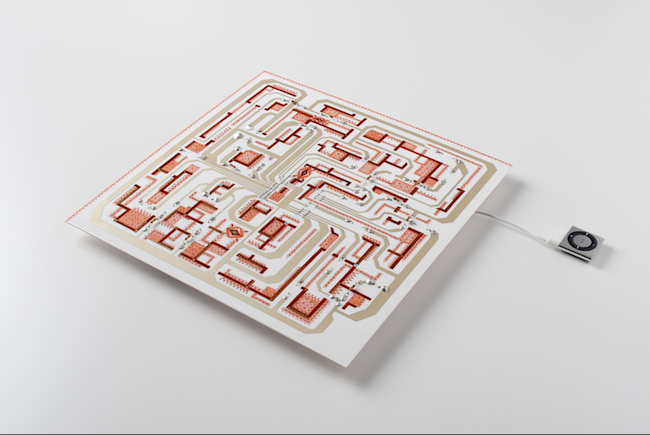Writing content for CFile is often a learning process. For example, at one point we were taken with the novelty of ceramic speakers. In the year and a half since we started CFile we’ve learned that ceramic sound is almost its own field within the medium, so much so that we decided to tag all of our previous coverage with “speakers” rather than link the several posts within each subsequent post. If you’d like to see more of these impressive sound systems for yourself, click “speakers” under the tags for this post.
This isn’t to say that we no longer feel that these designs are unique, quite the opposite. We still like the idea of combining the ancient medium of clay with something as techy as a high-quality sound system. They enhance each other. Sound makes the ceramics seem modern and fresh and ceramics give the speaker a unique visual presence (compare that to literally every other speaker on the market — a black plastic box with a black metal screen. Boring.) We recently came across a ceramic speaker that looks as impressive today as it did five years ago.

Simply titled ceramic-speaker, the project was a collaboration with Japanese design company nendo and Japanese potter Mitsuke Masagasu. The creative pairing was a part of the Revalue Nippon Project, which was started by former Japanese soccer player Nakata Hidetoshi to revitalize traditional Japanese crafts. Hidetoshi selected curators to pair a designer and a craftsperson for different projects. This pairing was selected by Akimoto Yuji, curator of the 21st Century Museum of Contemporary Art in Kanazawa, Japan. The speaker that was produced remains a quality example of what can be achieved when ceramics are combined with sound. The flat speaker resembles a circuit board, which would look impressive on one’s wall.
The designers state:
“We decided to complement the infinitely sophisticated, elaborate lines of Mitsuke’s red-glaze designs by fusing them with the infinite sophistication of digital manufacturing techniques to create a set of high-end audio speakers in 1mm thick ceramic substrate.
“Ceramic substrate has a high heat resistance, so is often used for LED bulbs and other heat-emitting internal components and rarely exposed to human eyes. Its computer-controlled manufacture involves shaving thin slices from thicker ceramic slabs, fixing them with mercury vapour and mounting all components with a robot arm; human hands touch no part of the process. We hoped that adding Mitsuke’s red patterns to the process would disrupt it entirely, allowing a new form of expression to emerge.
“As the substrate is exposed to sight, its function-optimized surface takes on a new decorative role. This reminds us both of the limits of the human hand, and of its infinite, unshakeable attraction, providing a glimpse into the future of craft.”
The caveat with this and with all ceramic speakers is that we haven’t heard one of these for ourselves yet and companies who make such speakers often do not publish their technical specifications. If you experienced one, please let us know what you thought of the sound quality in the comments section. We’re not naive enough to assume you could rock a club with a set of ceramic speakers, but perhaps they present a more aesthetically pleasing alternative to a typical home audio system.
Bill Rodgers is a Contributing Writer at CFile and is eagerly awaiting the day some madman attempts a ceramic subwoofer.
Any thoughts about this post? Share yours in the comment box below.

Add your valued opinion to this post.